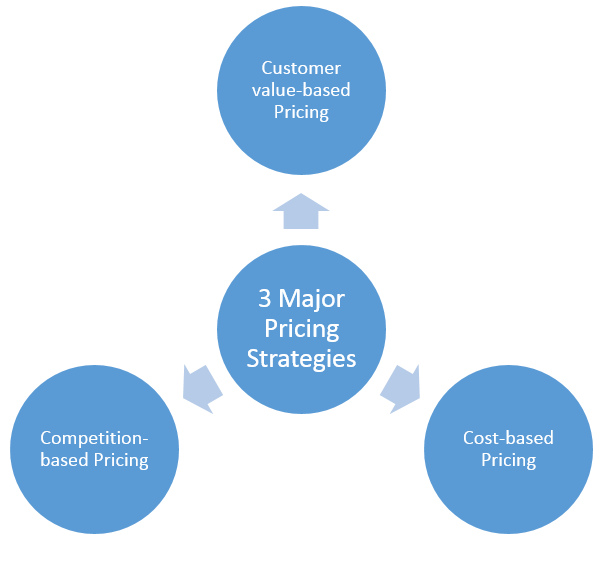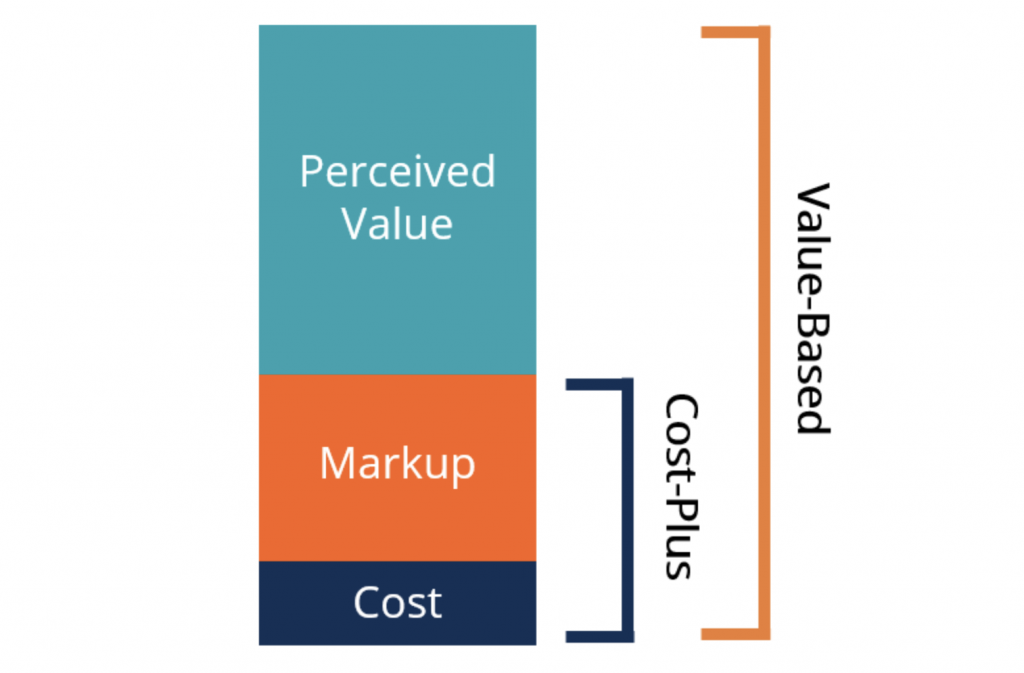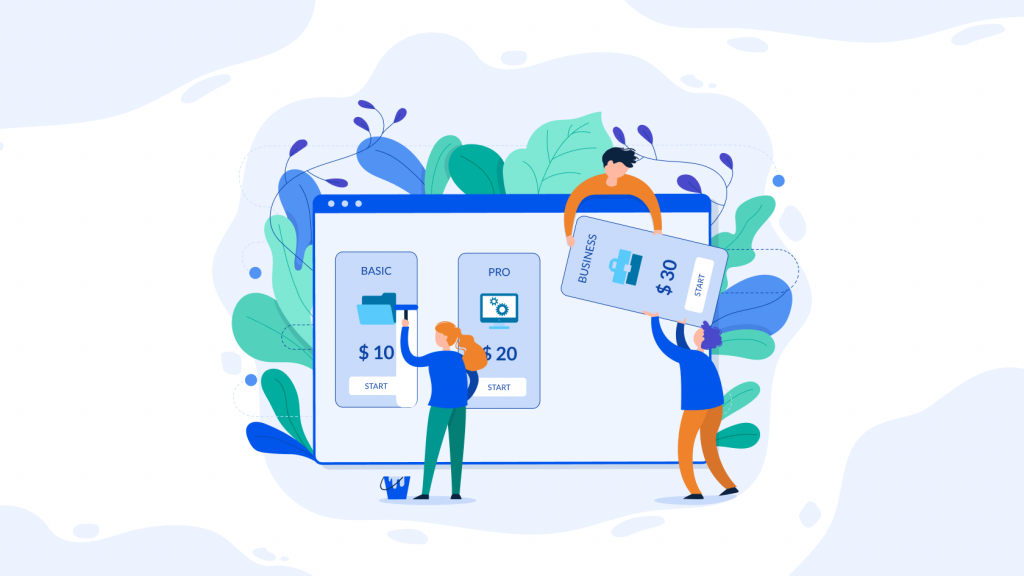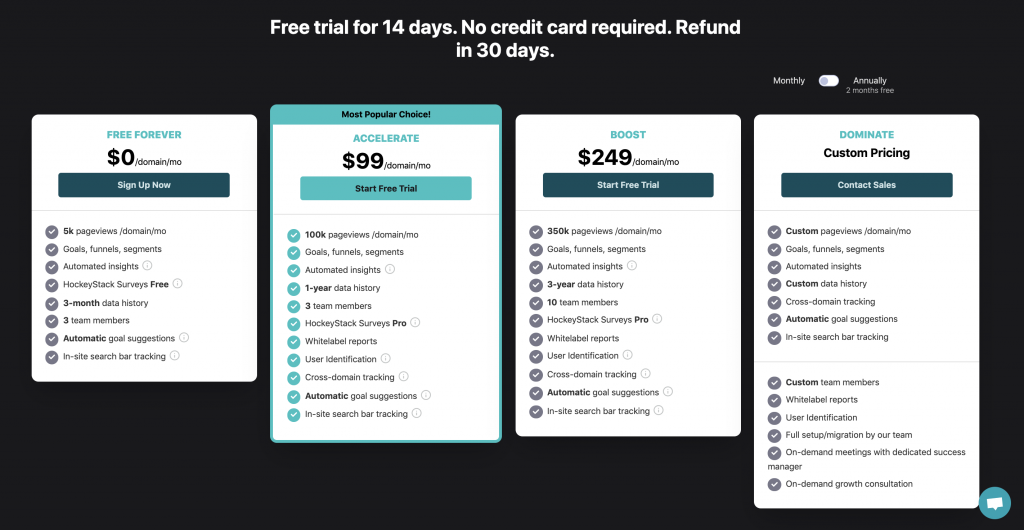Value-Based Pricing: Is It Good For You In 2022?
98% of SaaS businesses that chose to make a fundamental change in their pricing strategy benefitted substantially from doing so. The changes they made led to an increase in their revenue, a decrease in churn, and an overall improvement in their brand’s reputation. Choosing the right pricing model can make a huge difference, so it’s important to know about your options.
Probably the best-known pricing model is the cost-plus pricing plan: with this model, businesses charge their customers based on the amount they had paid to produce their products, and they add a profit margin to the product to make revenue. However, this pricing model is best for places like supermarkets. SaaS is far from being a part of the retail industry, where value is determined by production costs. That’s why you should learn more about the value-based pricing model.

What is Value-Based Pricing?
Value-based pricing is one of the three main pricing models businesses use. It can be best understood by comparing to the other two main pricing models:
- Cost-plus pricing: takes into account the amount paid to produce the product, including the costs of the materials, the paychecks of the workers, and the profit margin that the business determines.
- Competitor-based pricing: uses the prices set by competitor brands to set prices. This model may be used to portray your brand as the high-end solution, or to make your solution more attractive with cheaper products.
- Value-based pricing: sets a price based on the value the brand creates for its customers with its products and services. It still takes into account the amount paid to the teams working for the brand (marketing, sales, etc.) or the resources used, but the perceived value of the services are much more impactive.
Thus, the main difference between value-based pricing and the other pricing models is that this model takes the customer into focus. Also, note that the value-based pricing always sets prices equal to or higher than the cost-plus prices.
The logic behind using a value-based model for SaaS is then straightforward. Since putting a price on the resources used for SaaS is quite hard, (the time spent, tools used, people hired, research done are all hard to quantify in terms of cost) determining your prices based on the opinions of your customer base (on which your revenue depends) is more sensible.

How do you determine value?
First of all, you need to know your customer profile well. What do they see as valuable? But only taking the opinions of your existing customers will provide a biased result (they’re your customers because they were already willing to pay the price you had set.) You should also understand your qualified leads and the people you’re trying to reach rather than those you’ve already reached.
After getting a good idea about your customer base, you should take a closer look at your own brand. There are a few things you should evaluate:
Number of users
When a customer sees that a tool has 50 users and a similar competitor brand has 5000, their first instinct is to choose the second brand, even if the first one had better customer service or more products. This is because customers value the opinions of other customers more than their own research, so the number of users you have is one of the benchmarks determining value.
Features
The number and variety of your features also have an effect on value. Naturally, users value tools with lots of capabilities more than those that offer only a few. The important thing is about marketing your features and making sure that your customers see their value through strategies used for product adoption. Once you’ve shown your features, you can create different prices for different versions of your product (I talk more about this in the value-based pricing and tiered pricing comparison.)
Impact on customer KPIs
How much does your tool affect customers’ expansion revenues or the number of their qualified leads? You can use numbers from certain key SaaS marketing metrics to get a quantifiable idea about the value of your products.
Integrations
If your tool integrates with other platforms easily, then leads will be much more likely to pay for it. Customers don’t want to deal with custom integrations and multiple platforms, they want tools that can work together easily. For instance, if your product offers a marketing solution and integrates easily with different sales platforms, a lead looking for both solutions will value your services much more. It’s even better if you offer both sales and marketing tools under your brand.

Advantages of Value-Based Pricing
1. Increases profits
Since you’re not using a cost-plus model, your prices aren’t confined to the costs of materials and your set profit margin. Unlike the competitor-based pricing model, you don’t have to lower your prices when your competition does with the risk of losing revenue. With value-based pricing, your main focus is on proving your brand’s intrinsic value rather than proving yourself as a good alternative. A product may be costing you next to nothing, but if its perceived value is high, then the amount of money or time you put into the services doesn’t have to determine your profits.
The important thing is to not go overboard while setting a price. You can increase your profit margin compared to the other models, but you have to make sure that the price you set really matches the value. Otherwise, customers won’t be willing to pay, and they’ll have plenty of more affordable alternatives to choose from.
2. Reduces churn and increases loyalty
With the value-based model, customers feel like they’re truly getting their money’s worth. In a cost-plus model, while the production of a commodity costs $50, the user may not feel as if the product is worth $50. However, the value-based model’s price is set by the perception of those who are willing to use the tool.
If the value and so the price is high, customers will want to use it repeatedly, which translates to increased retention. As you add new features and capabilities, you can up your prices without losing customers. Unlike the other models, customers will know that your price tag is justified, meaning that you won’t increase churn for monetary reasons.
3. Helps in optimizing your products and services
While determining your product’s value, you perform a fair amount of research, which includes looking into specific metrics, comparing the value-price balance set by your competitors, and asking your customers about their own opinions. By the end of your research, you have a good idea about the term “value:” what is deemed valuable by customers, what is wanted and expected from your brand, which features would add value…These are all questions you can answer after your value-based pricing research.
While developing your products, you can make great use of this research. Improving your services based on the expectations shows that you listen to the needs of your customers and the market. For instance, when you learn that customers of a competitor pay $50 more for a survey feature, and when you know that your customers are requesting such a feature, you can add the feature while knowing that it’ll be used and valued.
Pro Tip:
HockeyStack’s churn optimization feature let’s you reduce churn while understanding the wants and needs of your customers 🙂
4. Improves brand reputation
Whenever you take the customer in your focus, you’re showing that you care. Caring about your customers is one of the best marketing strategies, and it’s the ultimate reason lying behind effective email marketing campaigns or customized ads and posts. When a customer knows that the brand listens to their feedback and improves itself accordingly, not only is that customer going to stay for longer, they will also be willing to pay more, even if your competitor has cheaper plans. Lasting relationships may often be more precious than cheaper prices.
Disadvantages of Value-Based Pricing
1. You need to go through trial and error
Unfortunately, value is not an objective term. What you think is valuable for customers may not necessarily be the determining factor in their purchases. That’s why it’s important to do a lot of research before setting a price: you have to back up your price with data.
However, this research requires a lot of time and effort, and although it’s worth it in the end, you may not achieve the right price at first. You may set the price too high and customers may stop buying, or you may set it too low and decrease profit. Finding the right balance requires some time.
2. Tougher competition
Using a solely value-based pricing strategy is risky. You may set the price that truly reflects your tool’s value, but once a competitor decides to pull down their prices to attract your users, you’re prone to losing a substantial number of customers. Not only that, but once a competitor with similar tools sets the price low, customers feel as if that type of service is only worth that much, and that you’re the one over-charging.
It’s almost impossible to ignore your competition while setting prices, so you’ll always have to keep them in mind. Or, you’ll have to take the risk and stick with the customers who are willing to pay for your real value (which would translate to a small customer base.)
3. High expectations
Customers know that the product didn’t cost you as much as the price you’ve set. They know that you set the price based on the promised value of your product. So, there’s always an expectation you have to fulfill: you constantly have to prove that you’re deserving of your price tag. You have to do this by using an effective customer marketing strategy and by making your customers feel valued not only with your products but also with your customer service.
4. Requires more resources
These resources include the time and effort I’ve mentioned above, but it’s also worth noting that constantly updating your product isn’t the cheapest and easiest thing to do. With a value-based model comes the responsibility to add a unique aspect that differentiates you from competitors who may have more affordable options.
This is a valid expectation for grown and established brands. However, if you’re a new business, you may not have the necessary budget or the experience to constantly add on to your services, so this model may become a hardship.

Is Value-Based Pricing Good For SaaS?
SaaS businesses benefit from the advantages I’ve mentioned below, but when you take a close look, there are several industry-specific reasons as to why the value-based pricing model is good:
- SaaS is a dynamic industry, and the prices should reflect this.
Businesses in SaaS constantly update their products and services. This is because the industry is constantly evolving, there is more competition each day, and companies have to continuously improve themselves in order to survive. As you add on new features and integrations and even add new platforms/tools, your pricing should change accordingly. The value-based pricing model ensures that, while your product adapts to the market’s needs, your price adapts to yours. Constant updates require stable and increasing revenue.
- Increases the LTV:CAC ratio.
An average healthy SaaS business has an LTV:CAC ratio of 3:1. However, your ratio doesn’t have to be 3:1: the value-based pricing model can substantially increase this metric. The customers who pay the price you’ve set are willing to make full use of your resources, and while they become valuable assets to your business, all you have to do is put out products–something you were (hopefully) already doing.
- More referrals.
You can increase the number of your promoters on the NPS survey by optimizing your pricing model. For customers, the price tag is one of the most important aspects of a product. In fact, 60% of customers in the buying process think about the pricing first. If your prices are set by your customers, chances are they’ll be content with your brand much more. And when a customer is satisfied, they are likely to refer you to a friend, a colleague, or a family member. They’re even likely to drop a good review for all to see.
What Are The Differences Between Value-Based and Tiered Pricing?
A Brief Description of Tiered Pricing
Tiered pricing is another widely-used pricing strategy. The other commonly used strategies are usage-based, user-based, feature-based, and flat rate strategies. The tiered pricing strategy is about offering different versions of your products and having separate prices for each version. The versions that have more features and capabilities are more expensive, and those with limitations are the cheapest, some even make them free. A good example is HockeyStack’s pricing plan:

If you analyze the differences in pricing, you’ll notice that an increase in functionality doesn’t correspond to an exponential increase in prices. Tiered pricing wants to encourage users to buy the more expensive plan with more functionalities by thinking that it’s a “better deal.” Some other reasons behind using a tiered pricing model are:
- Improving conversion rates by appealing to a wider range of budgets and customer segments,
- Creating the oppurtunity to upsell,
- Creating customized purchasing experiences for different customer models.
Tiered Pricing and Value-Based Pricing
These two pricing strategies aren’t mutually exclusive. Actually, the tiered model reflects ideas that come from the value-based model. The most expensive or customized pricing plans are expensive because they have more perceived value. They offer more features, they’re likely to boost the metrics of customers more, and they’re usually more customizable.
Using a tiered pricing strategy together with a value-based pricing model is quite effective for SaaS businesses. That’s why nearly 71% of SaaS companies offer 3 or more different pricing plans rather than having a single, fixed one. Since there are different types of customers who have different expectations, it’s important to offer different plans with varying values.
For example, a big YouTube channel owner will value a video editing software more than a student, and an advertising company that uses video ads will be willing to pay more than the YouTube channel. You can’t have a one-price-fits-all plan, since the definition of value changes from user to user, and you wouldn’t be getting the maximum profit from each segment.
Conclusion
Pricing is one of the most important factors in customers’ buying processes, but SaaS businesses, on average, spend only 6 hours crafting their pricing plans. If you want to have a competitive edge, you need to put in the hours and do your research. This extensive research will help you determine your products’ value and so accurate prices.
While it’s true that the value-based pricing strategy is complex and arduous, it can also help you increase revenue, decrease churn, and increase your performance on important SaaS sales metrics like LTV. When used with other strategies that include competition research and tiered pricing, this pricing model can prove to be the change your business had been looking for.
FAQ
The answer depends on the industry and company. For SaaS companies, value-based pricing is one of the best strategies along with competition-based pricing.



